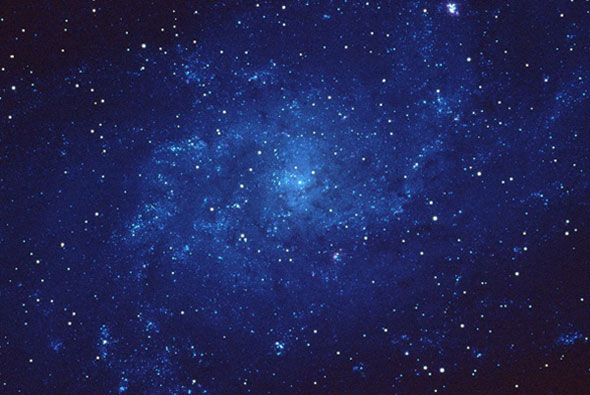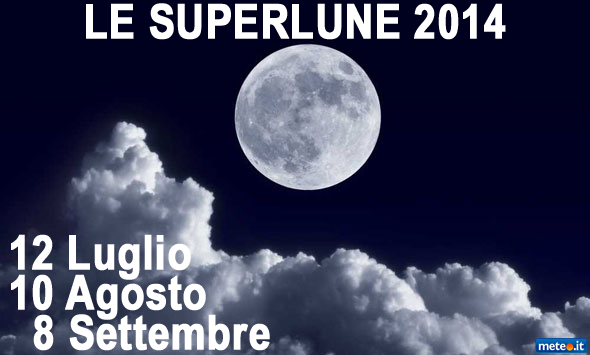10 AGOSTO, NOTTE DI STELLE CADENTI E DELLA SUPERLUNASUNDAY AUGUST 10,2014, NIGHT OF FALLING STARS AND SUPER MOON
 10 AGOSTO 2014: NOTTE DI STELLE CADENTI
10 AGOSTO 2014: NOTTE DI STELLE CADENTI
La Notte di San Lorenzo, chiamata anche Lacrime di San Lorenzo, è da sempre il momento propizio per l’osservazione delle stelle cadenti. In questo periodo, ogni anno, la terra transita nella scia di residui lasciati da un asteroide o cometa. Questi frammenti (meteoroidi), entrando a contatto con l’atmosfera bruciano a causa dell’attrito generato dalle altissime velocità a cui viaggiano.
Se il numero di meteore osservate supera le 10 in un ora siamo in presenza di uno sciame meteorico, se addirittura supera i 1.000 parliamo di tempesta meteorica (ZHR Tasso Zenitale Orario).
LA NOTTE DELLE STELLE CADENTI
Gli sciami meteorici prendono il nome dalle costellazioni da cui provengono: ad esempio se le meteore sembrano provenire dalla costellazione del Leone, si chiameranno Leonidi;Â se dalla costellazione della Lira, Liridi; se, come in questo caso, sembrano provenire dalla costellazione di Perseo, si chiamano Perseidi.
Quest’anno il picco dello sciame di meteoriti si avrà nella notte tra il 12 ed il 13 agosto, se il cielo sarà limpido e sereno sarà possibile vedere anche 80-90 meteore ogni ora.
LA SUPERLUNA ILLUMINA LA NOTTE
Proprio in coincidenza con la Notte di San Lorenzo, la luna si presenterà nella sua massima espressione.
Il 10 agosto, infatti, è attesa la seconda Superluna che quest’anno ha già fatto la sua apparizione il 12 luglio. La Superluna è un evento che capita raramente ad intervalli di anni. Quest’anno sarà il più propizio per poter ammirare questo fenomeno: le notti di Superluna del 2014 sono infatti ben tre: la prima il 12 luglio, la seconda il 10 agosto e la terza ed ultima l’8 settembre. Per rivedere nuovamente la Superluna dovremo poi aspettare fino al 14 novembre del 2016.
LA SUPERLUNA ILLUMINA LA NOTTE
La Superluna viene definita tale per la coincidenza di due fattori: il plenilunio (luna piena) e il perigeo. Il perigeo è il punto dell’orbita più vicino alla Terra (distanza orbitale minima), mentre l’apogeo è la distanza massima del satellite dalla Terra.
Il fenomeno della superluna condizionerà la visibilità notturna, illuminando il cielo e rendendo più difficile quindi l’avvistamento delle stelle cadenti.
Le previsioni per la notte del 10 agosto al momento danno cielo sereno o parzialmente nuvoloso. Non resterà che ammirare col naso all’insù lo spettacolo cosmico.
FONTE METEO.IT 10 August 2014: NIGHT OF FALLING STARS
10 August 2014: NIGHT OF FALLING STARS
The Night of San Lorenzo, also called Tears of San Lorenzo, has always been the right time for the observation of shooting stars. During this time, every year, the earth passes through the trail of debris left by an asteroid or comet. These fragments (meteoroid), entering in contact with the atmosphere will burn due to friction generated by the high speed at which they travel.
If the number of meteors observed exceeds 10 in a time we are in the presence of a meteor shower, even if it exceeds 1,000 talking about meteor storm (ZHR rate Zenith hours).
THE NIGHT OF THE SHOOTING STARS
The meteor showers are named after the constellation from which they come: for example, if the meteors appear to come from the constellation of Leo, will be called the Leonids; if the constellation Lyra, Lyrids; if, as in this case, seem to come from the constellation Perseus, they are called Perseids.
This year, the peak of the meteor shower will be had on the night between 12 and 13 August, when the sky will be clear and serene you will even see 80-90 meteors per hour.
THE NIGHT THE LIGHTS superluna
Just to coincide with the Night of San Lorenzo, the moon will occur in its maximum expression.
On 10 August, in fact, it is expected that the second superluna this year has already made ​​its appearance July 12. The superluna is an event that rarely happens at intervals of years. This year will be the most conducive to admire this phenomenon: the nights of superluna of 2014 are in fact three: the first on July 12, the second on August 10 and the third and last September 8. To review the superluna again we will have to wait until November 14, 2016.
THE NIGHT THE LIGHTS superluna
The superluna is defined as such for the coincidence of two factors: the full moon (full moon) and the perigee. The perigee is the point of the orbit closest to Earth (minimum orbital distance), while the height is the maximum distance of the satellite from the Earth.
The phenomenon of superluna affect visibility at night, illuminating the sky and making it more difficult then the sighting of shooting stars.
The forecast for the night of August 10 when giving clear or partly cloudy sky. Will only have to admire with the nose the cosmic spectacle.
Leave a Comment
You must be logged in to post a comment.




